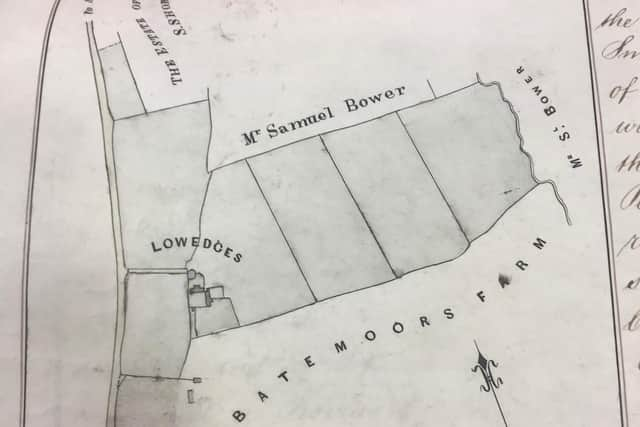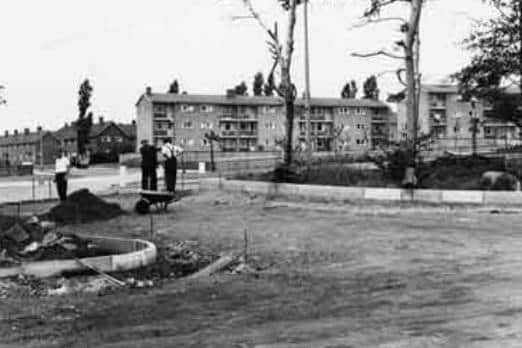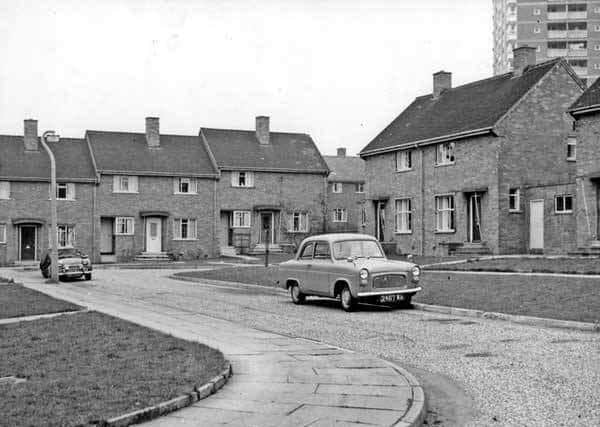Did low farm 'edges really give Sheffield suburb Lowedges its name?
and live on Freeview channel 276
Our everyday routines, such as the ways we shop, eat, go to school, build our homes and live together, are often unnoticed and unappreciated as unique and important.
This is why a project has, over the last year, aimed to investigate people’s personal histories in the Sheffield suburb of Lowedges, in order to create an archive of the stories of everyday post-war urban life.
Advertisement
Hide AdAdvertisement
Hide AdTales of local characters, everyday life, extreme weather, daily routines and significant events have all been recorded by the project, which is in the process of publishing a complete book containing all the information and stories recorded so far.


The Better Life in Lowedges project was started by the Lowedges Tenants and Residents Association (TARA), who won a grant from the Heritage Lottery Fund to work with Heeley City Farm Community Heritage team, which includes community heritage manager Sally Rodgers, heritage and well-being officer Rebecca Hearne and historian Laura Alston.
The response to the project was immediate and enthusiastic, and with help from local organisations such as the Terminus Initiative and cafe, the TARA, the Lowedges housing association team, archives service and libraries, churches, shopkeepers, pub owners and residents alike, a phenomenal amount of information has been gathered.
It paints a nostalgic picture of life in a newly-built Sheffield suburb in the 1950s and a picture of a caring, friendly, and vibrant community which, according to many residents, is very much alive to this day.
Advertisement
Hide AdAdvertisement
Hide AdThe name Lowedges comes from the original name of a farm on Chesterfield Road, which was once known as the Sheffield to Derby Turnpike, at the easternmost edge of what is now the estate.


Lowedges has two possible derivations: firstly because ‘low’ means hill in Derbyshire dialect, therefore ‘Low Edge’ means, ‘on the edge of a hill’.
Historian Laura Alston says that, from looking through maps and materials in the Sheffield City Archives, Lowedges might have been a corruption of ‘low hedges,’ because the hedges around the farm were particularly low-lying.
Either way, Lowedges farm was not the first thing to be built on the land, as tithe maps and deeds mentioning Lowedges in the archives have been found dating all the way back to the 1600s.
Building of the Lowedges estate began in 1953.
Advertisement
Hide AdAdvertisement
Hide Ad

Many residents recall playing as children in the brook which runs through the park and which formed the official boundary between Sheffield and Derbyshire.
One ex-resident told us, “I remember that stream in the park; we were able to straddle it, thinking, right, I’ve got one foot in Derbyshire and one foot in Yorkshire!”
Some residents have lived on the estate from its very beginnings. Kenneth Ellis was born 76 years ago at Upper Batemoor Farm, now behind the row of houses on Chesterfield Road.
The Ellis family owned and worked the land the estate is built on back when it was still used for agriculture and keeping pigs. His family’s farm still stands as testament to their legacy.
Advertisement
Hide AdAdvertisement
Hide AdAlthough now a family home, other residents remember a farm yard and stables, horses, pigsties and chickens.
Mr Ellis was interviewed for the project. He told us: “They started building in 1953 or something like that, because in 1952 they were knocking in the pegs for Lowedges Crescent, because I rode on the bulldozer when they were opening the road up!"
Kathleen Wells told us: “I’ve lived in this house since 1955 and I’ve got the document to prove it!
“After the war there was a very long waiting list for council properties and that’s when they really started building a lot of social housing. This was the first time we’d had an indoor toilet — lovely!”
Advertisement
Hide AdAdvertisement
Hide AdBuilding continued over a number of years; Lorraine Lawlor, who as a child lived on Gresley Road, remembers: “They were still building the rest of the houses across the road when these were finished.
"It was quite interesting for us because we were living in a building site — we used to go round looking for offcuts of asbestos that we used to use as chalk to play hopscotch — that can’t have been much good for us as kids!”
The houses consisted of a mixture of maisonettes, terraced houses and one-bedroomed flats. In the beginning, there were no shops, schools, or pubs; these were added later as the houses were finished and the number of residents increased.
Joan, a 92-year-old resident who arrived in 1955, remembers: “They’d just about finished rationing in 1955 but it was hard — they were still rationing coal. Nobody had a gas fire, it was all open fires.
Advertisement
Hide AdAdvertisement
Hide Ad“The winters were horrendous. Ice in leaf patterns on the inside of the windows! The living room was the only room that had a fire — we called it the sunshine room!
“We did have a radiator at the top of the stairs, and we had one in the kitchen that came from the fire, but of course the fire went out in the evening — there was a little back boiler that heated the water, so we did have hot water, but you had to light the fire to get the hot water.
“And you could have a choice of gas or electric cooker provided by the council.”
The estate was unique for its time, however: a Sheffield Telegraph article dated July 15, 1954 had the headline ‘Wives sing on washdays’ and quoted Mrs Edna Johnson as saying: “A house on this estate is the realisation of an eight-year-old dream… My husband and I had five years living in one room —this is heaven.”
Advertisement
Hide AdAdvertisement
Hide AdThe new houses had multiple bedrooms, electric sockets, and built-in storage, and were described as “beautifully compact”! Grocery vans brought meat, vegetables, bread and milk to the estate and the first shops were built soon afterwards.
Stephen Rich, TARA member and a driving force behind the project, has said, “When we started the Better Life In Lowedges project, we wanted to get down on paper everything that’s happened over the last 50 years on the estate.
"It’s changed things by unveiling information we never knew and we’ve only just scratched the surface. A lot of things have come to the surface very recently in the last weeks of the project, and it’s taken us 12 months to get to the point of finding this information, so what else will we find?”
The project is also producing a community archive containing all the material that has been gathered, which will live in the Tenants Hall on Gresley Road.
Advertisement
Hide AdAdvertisement
Hide AdThe archive contains newspaper clippings, photographs that have been donated by local people, copies of documents, maps, and all of the interviews that have been undertaken.
A book to accompany the project and publishing the stories found will be published soon.
For more information on the project, contact [email protected].
In these confusing and worrying times, local journalism is more vital than ever. Thanks to everyone who helps us ask the questions that matter by taking out a digital subscription or buying a paper. We stand together. Nancy Fielder, editor.